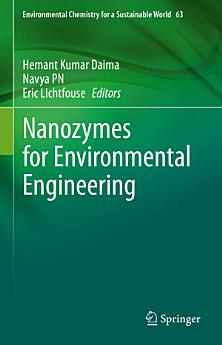Nanozymes for Environmental Engineering
এই ই-বুকের বিষয়ে
লেখক সম্পর্কে
Dr. Hemant Kumar Daima, is nano-biotechnology expert at Amity University Rajasthan, India and visiting scientist at RMIT University, Australia. His research findings have revealed guiding principles involved in rational nanoparticle design strategies for biomedical applications. He is editorial member of leading scientific publishers, member of numerous scientific/professional bodies, and recipient of international fellowships/awards.
Navya PN is assistant professor at the Bannari Amman Institute of Technology, India. She is cofounder of Nano-Bio Interfacial Research Laboratory (NBIRL). Her research works are at the interface between nanotechnology and biology. She is recipient of several international fellowships.
Dr. Eric Lichtfouse is professor of environmental chemistry and scientific communication at Aix-Marseille University, France and Xi’an Jiaoting University, China. He has invented carbon-13 dating based on the discovery of temporal pools of organic molecules in soils. He is Chief Editor and co-founder of the journal Environmental Chemistry Letters, and the book series Sustainable Agriculture Reviews and Environmental Chemistry for a Sustainable World. He has published the book Scientific Writing for Impact Factor Journals.








